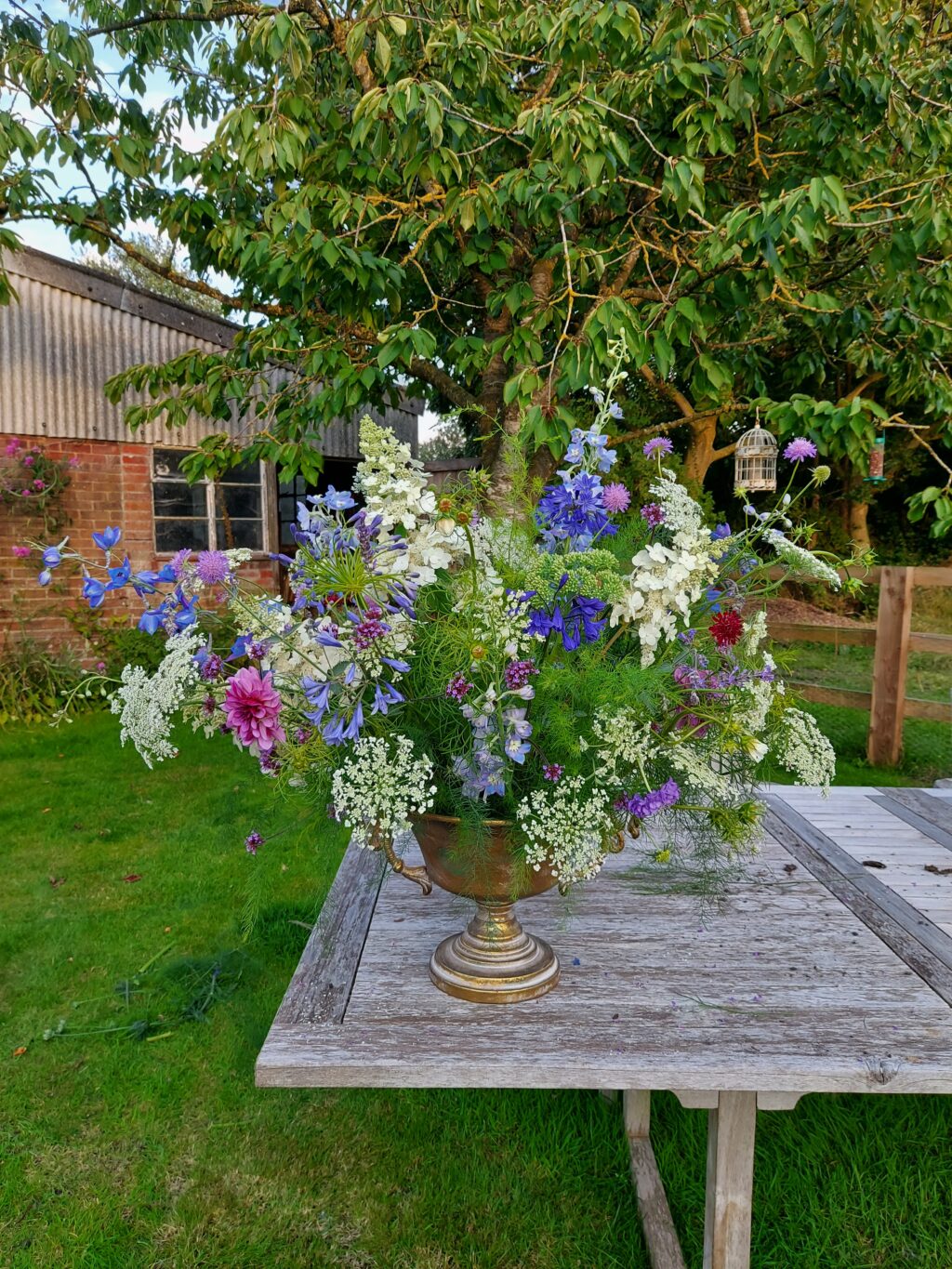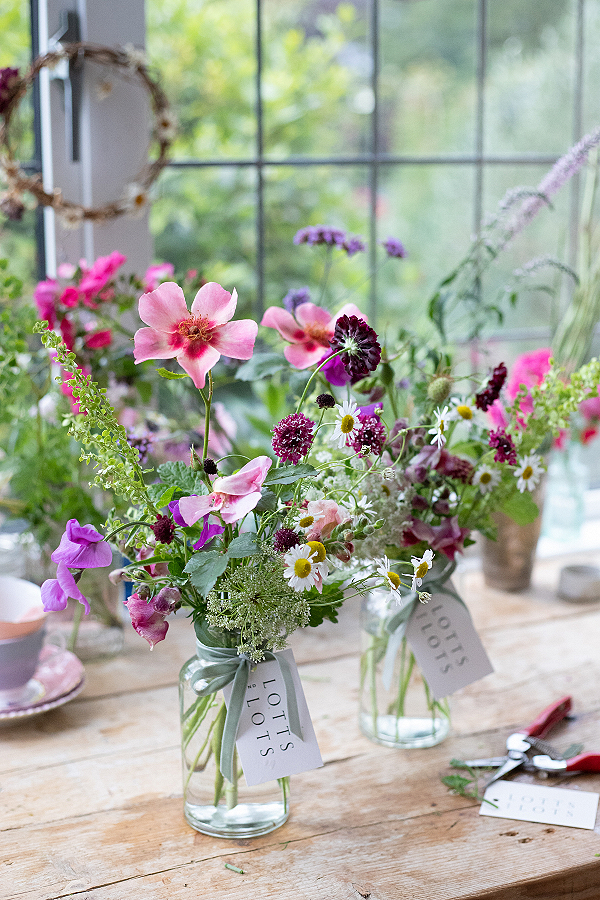FFTF at the Oxford Real Farming Conference
Zanna Hoskins, who runs SPINDLE in Lyme Regis, Dorset, reports for us on this year’s Oxford Real Farming Conference. She explores how British flower farming intersects with a whole range of issues affecting the modern farming community, from soil health to social equality, to the prehistoric reasons why we shouldn’t worry so much about pruning…
In January, I attended and supplied the floral arrangements for the Oxford Real Farming Conference (ORFC). For 14 years it has been a protesting voice to counter the more corporate Oxford Farming Conference (OFC) which happens just across town over the same two days.
Originally it was set up by growers and campaigners who now form the nexus of the Landworkers’ Alliance. They envisioned a transformed food system based on agroecology and recognized that farming is at the heart of all human endeavor rather than a business like any other. They felt that farming shouldn’t be at the mercy of global trade and commodity markets. Back at the beginning they were the scruffy cousins, but nowadays representatives from DEFRA sit on panels alongside voices from the farming and NGO sectors. Members of the UK Climate Change Committee (CCC) discuss the potential for agroecology to help deliver net zero and debate the findings and implications for farm policy and practice in the UK.
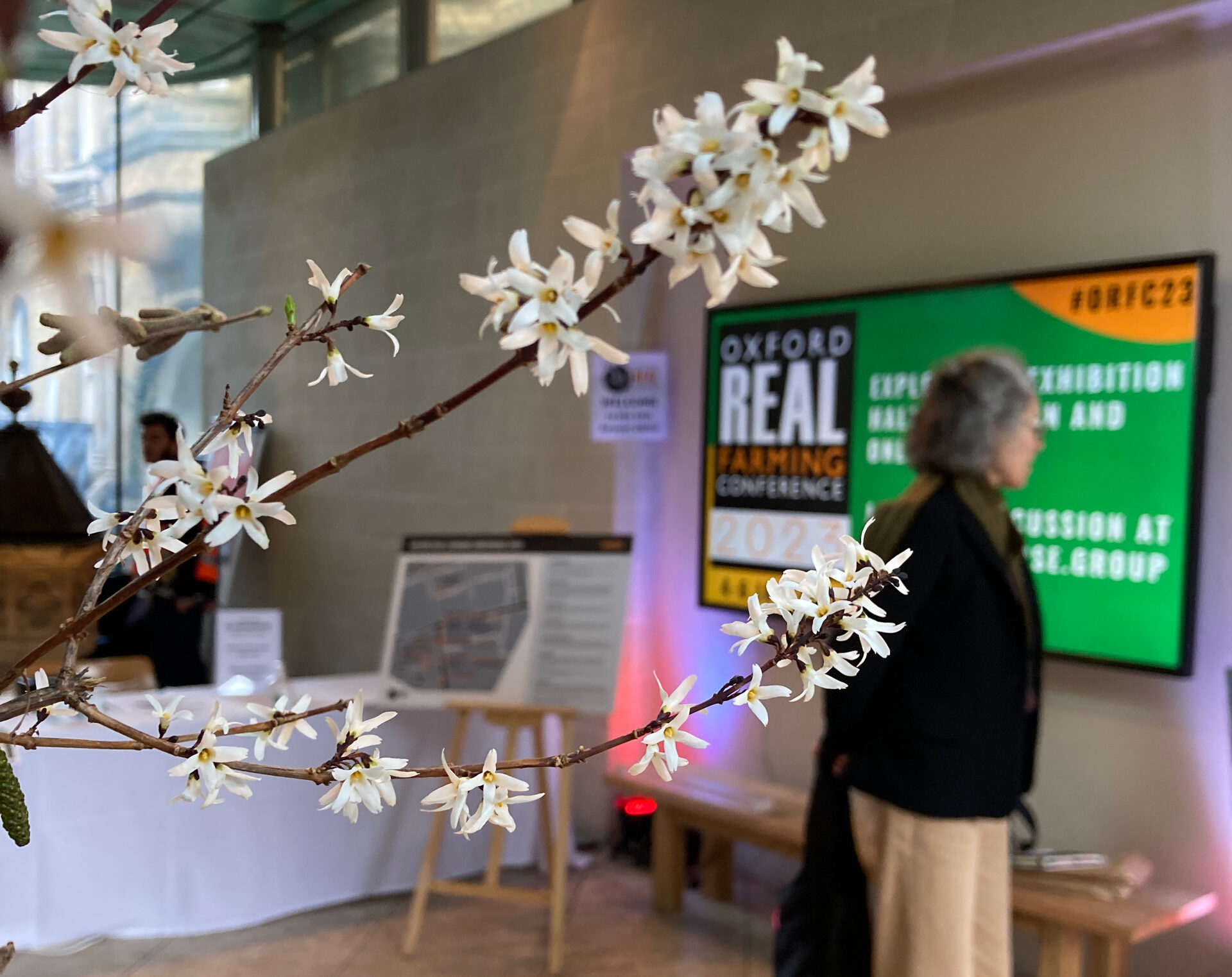
In-season Abeliophyllum distichum from Zanna’s farm prettifies and provides its unique perfume to reception at this year’s ORFC.
Vandana Shiva, an Indian scholar, environmental activist, food sovereignty advocate, ecofeminist and anti-globalisation author, gave the keynote address. In it she referred to her belief in “Nature as the ultimate teacher” being at the root of everything she stands for. She says she always returns to the fact that, on a global scale, “We organic farmers are few, but microbes and soil biology are adding to our number, and those guys are powerful!”
Taking things down to a soil level brings me to the first session I attended at the conference. Being a foliage farmer doesn’t mean I don’t have to worry about weeds, so my first stop was a panel discussion on intercropping, living mulches, herbal leys and other low tech fertiliser innovation.
These trials came about in response to the Fertiliser Crisis in 2022, triggered by the war in Ukraine and the meteoric rise in the price of all major fertilisers, which caused a ripple effect of extra costs across the farming industry. Four farmers teamed up with researchers from Innovative Farmers, part of The Duchy Future Farming Programme, to test new ideas for nature-friendly practices on their farms. They were seeking independence from global markets, and revealed a range of findings on alternative fertility management.
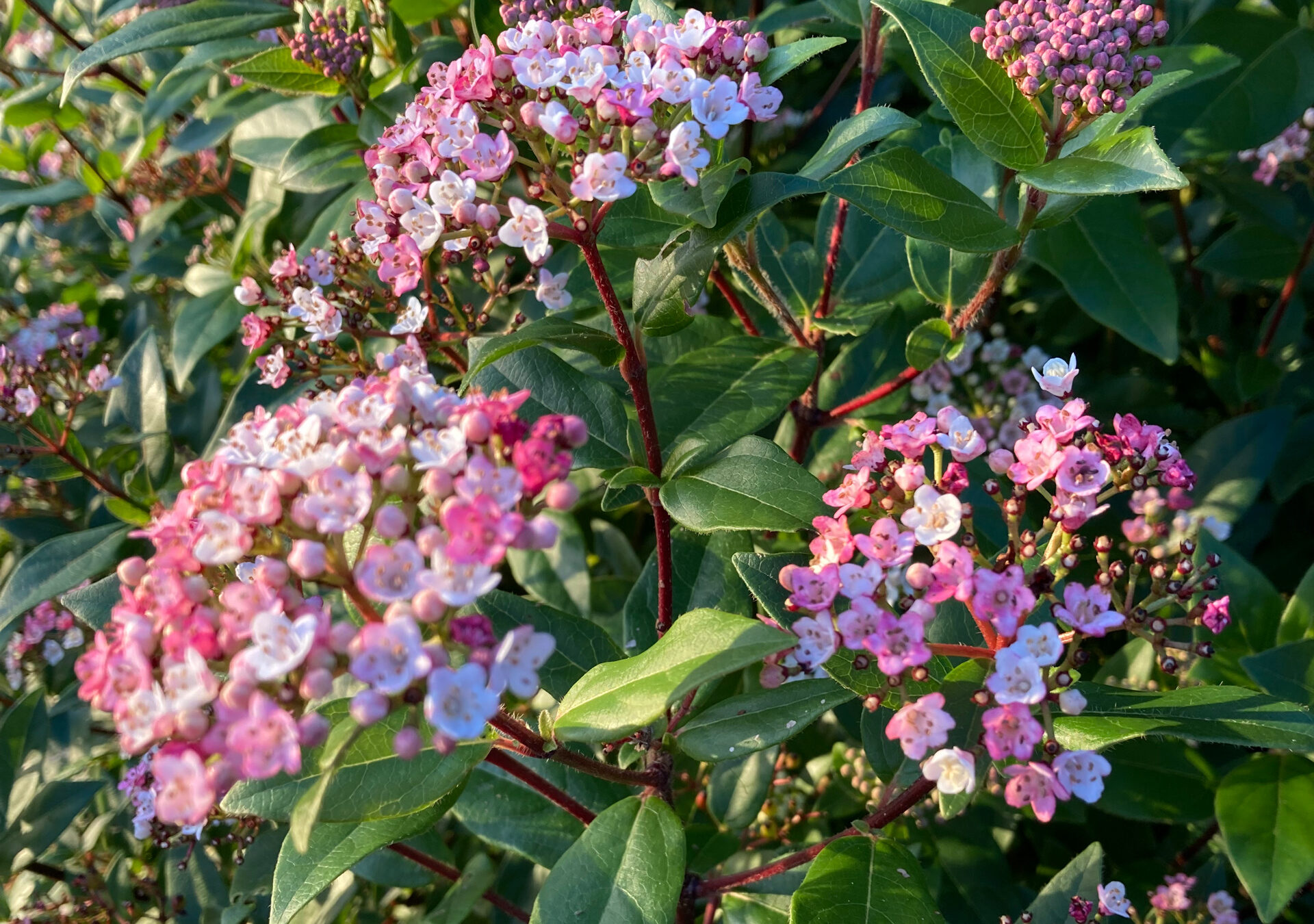
Another shrub in flower on Zanna’s farm at this time of year, Viburnum Tinus, in fine health as she continues to experiment with weed and soil management techniques.
Another fascinating aspect of the conference was the on-going enquiry into equality and inclusion, which reflected a recurrent theme, that binary thinking doesn’t fit with nature.
Clare Ratinon, author of Unearthed – on race and roots and on how the soil taught me I belong spoke about “breaking down the binary” and “renegotiating her relationship to control” in relation to growing, land justice, food justice & racial justice. Nature doesn’t do straight lines or see human concepts such as ethnicity, or any other category boundaries or distinctions.
The session on the Jumping Fences report, which seeks to understand and address the barriers to land access in farming for Black people and people of colour (BPOC) offered a fascinating insight for me – a middle-class white woman – into how BPOC farmers and growers are not only farming as a job (a very small number, see below) but simultaneously trying to change the system in which “the whiteness of rural Britain” is an unchallenged given and in which feeling unsafe as a person of colour is commonplace. We all want choices, to follow our path without meeting prejudice (or physical danger) because of the colour of our skin or the way we look.
In the report The Two Sides of Diversity from Policy Exchange in 2017, analysis of the statistics demonstrates that land-based work in Britain tops the ‘least diverse’ list of occupations. The list reads as follows:
- Farmers
- Environmental professionals
- Animal care services occupations
- Police officers (sergeant and below)
- Gardeners and landscape gardeners
When four of the top five least diverse occupations are land-based and often located in rural areas of Britain, we have to ask the question why is that the case? What are the barriers to entry to those professions for BPOC? – Cel Robertson, Forever Green Flower Co.
As I enquire deeper into these issues, trying to listen and to understand, unpicking the devastating effects of colonialisation (including why it is acceptable that plants from all over the world were ‘discovered’, claimed and re-named), it becomes increasingly imperative for me to find a way to digest my own history. I feel unsteady, unconfident, not sure whether I am expressing the situation accurately from a BPOC perspective, but I feel it’s better to try, than to stay behind my line and not.
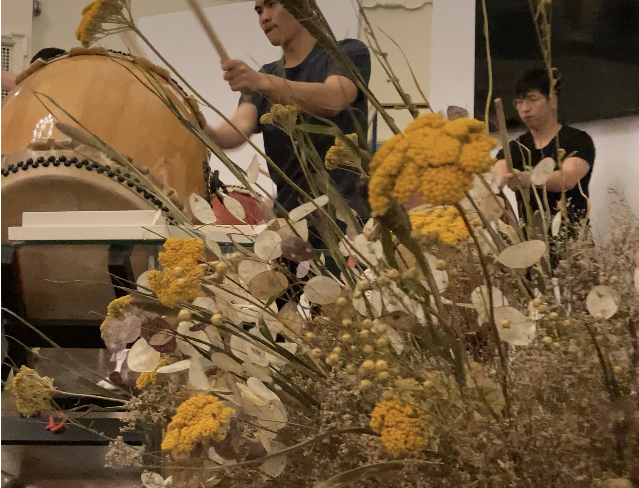
As well as fresh foliage and blossom, Zanna provided dried flowers to decorate the ORFC venue and its many different sessions.
While at the conference, I also took the opportunity to have a quick chat with Ben Raskin, the Soil Association’s tree specialist.
We talked about the benefits of silvoarable systems, where trees and shrubs are grown between crops to provide shelter, habitat for pollinators and pest predators, and to build soil health. This is something I have seen the benefits of on my own flower crops, as my trees and shrubs have grown up around the flower beds.
We discussed an on-going question I have about the viability of growing foliage and shrubs on field margins to provide habitat biodiversity (as will be required of farmers by law in the near future). Ben agreed that this would be of all-round benefit for the farmer, the foliage grower, and most importantly for biodiversity.
Another of my questions concerned the continual harvesting of material from foliage shrubs and trees. If conventional pruning wisdom states that you should never take more than a third of a plant at any one time, and prune during the winter months, what were Ben’s thoughts on those of us who cut throughout the year, and are we damaging the plants by doing so?
All my own research so far has continued to point in the direction that the more you keep a plant in a juvenile state the longer it will live, and Ben agreed. He commented that the ‘one third rule’ is almost certainly “something someone once said”, and not necessarily true. He also confirmed that the more we prune the more the plants grow back. His advice was to carry on cutting when needed, but to factor in a winter-prune when necessary to bring the plants back to good condition during dormancy.
Ben confirmed that oaks used to be coppiced on a 30-year rotation, possibly for ship-building. In Savernake Forest (and Epping Forest, and probably many other places in Britain) there are many ancient coppiced/pollarded trees including two magnificent oaks called ‘Big Belly’ and ‘The King of Limbs’, both of which are over 1,000 years old. Apparently, many (established) deciduous trees and shrubs can be coppiced.
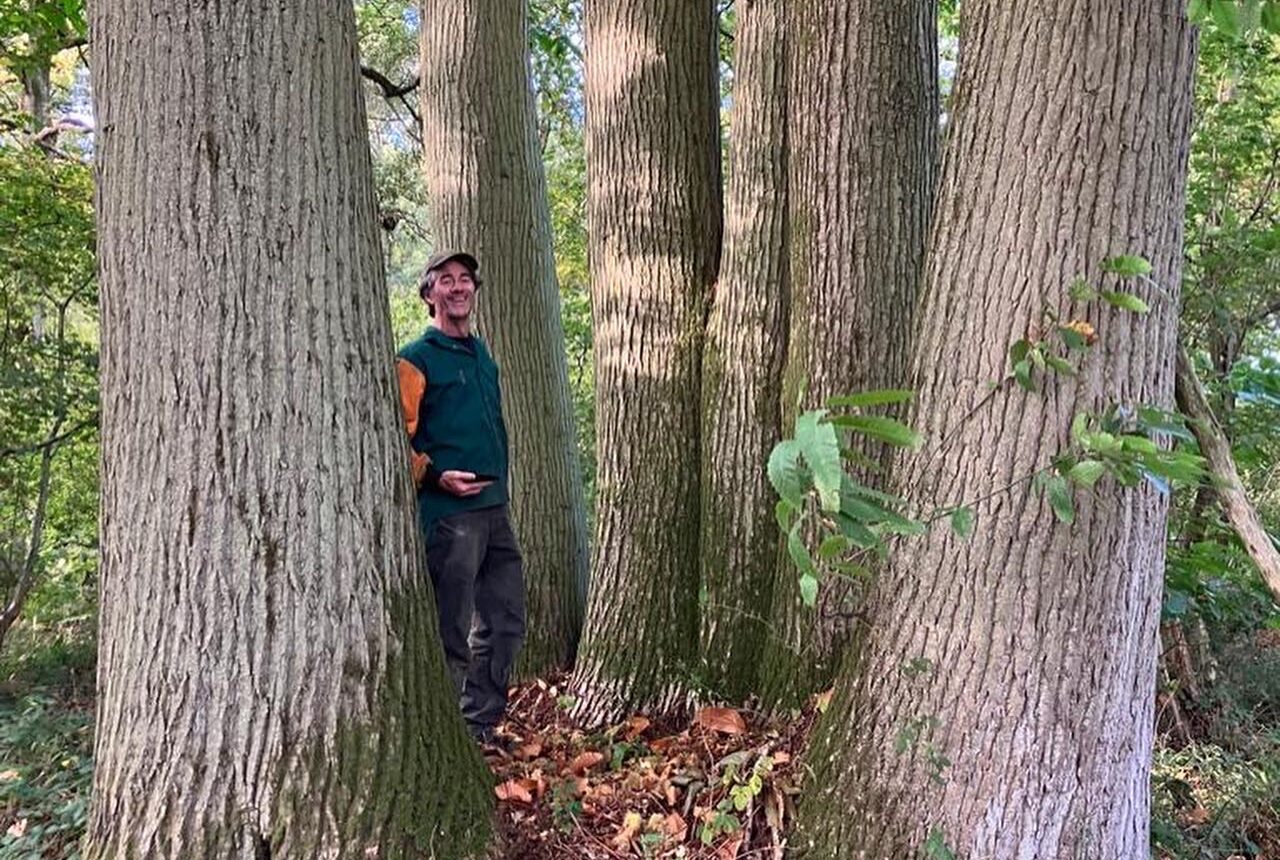
A chestnut that has grown into a multi-stemmed tree after being coppiced about 80 years ago.
I’ve wondered for a while why this might be, and I put it to Ben that our native flora might have evolved to put on extra spurts of growth to compensate for being heavily browsed by mega-fauna back when the British Isles was part of mainland Europe. We discussed the fact that this would probably be true the world over, and that plants don’t seem to mind a bit of rough treatment.
So, although it undoubtedly IS good practice to prune using sharp secateurs, cutting just above an outward-facing node, I cheerfully leave you with the mental image of a woolly mammoth on Christchurch meadow, Oxford, ripping the tips off the birch trees for breakfast.

